The toppings of a pizza are equally as crucial as the crust and sauce. But have you ever pondered the ideal order for topping a pizza?
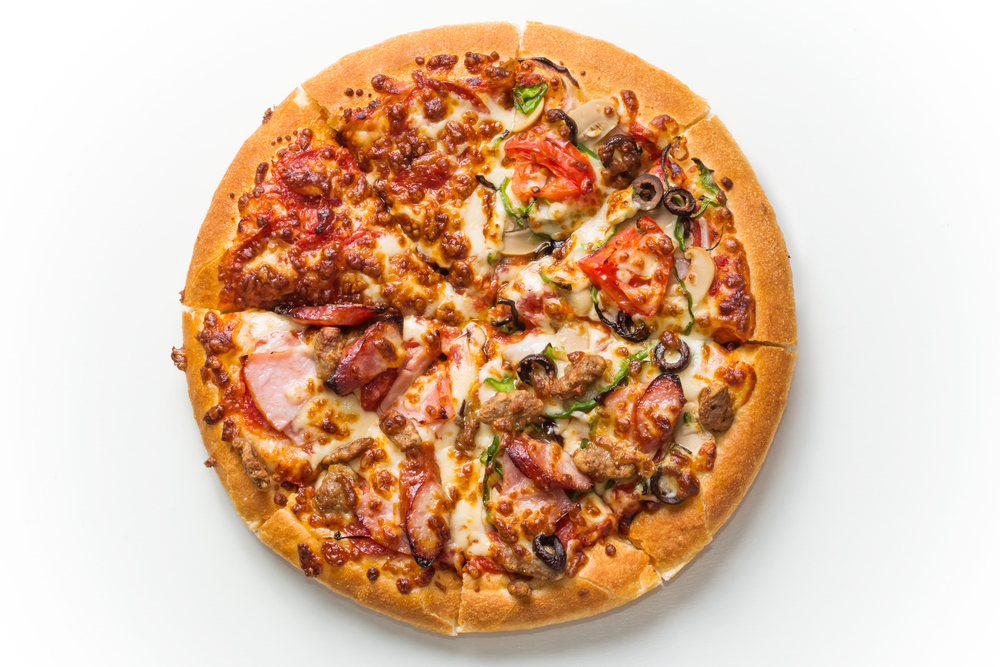
There are numerous viewpoints on this matter, but we’ve done the research to give you the most widely used and successful pizza topping ideas.
Prior to anything else, think carefully about the toppings you’ll be utilizing. Pizza toppings can be added either cooked or raw, depending on the ingredient. For example, meats should be prepared before being put to the pizza.
Each topping’s texture and degree of moisture should also be taken into account because they have an impact on the final product of the pizza.
You can guarantee that every component is cooked to perfection and that the pizza turns out excellent every time by following a set order for the toppings.
Knowing the right sequence to add your toppings to your pizza can make all the difference, whether you like the traditional pepperoni and mushroom or like to be creative.
We’ll discuss several pizza topping techniques and give you pointers on how to make the ideal pie in the sections that follow.
The Importance of Pizza Topping Order
When it comes to making pizza, the order in which you add your toppings can make a big difference in the final product. In this section, we will discuss why pizza topping order matters and how it can affect the flavor and texture of your pizza.
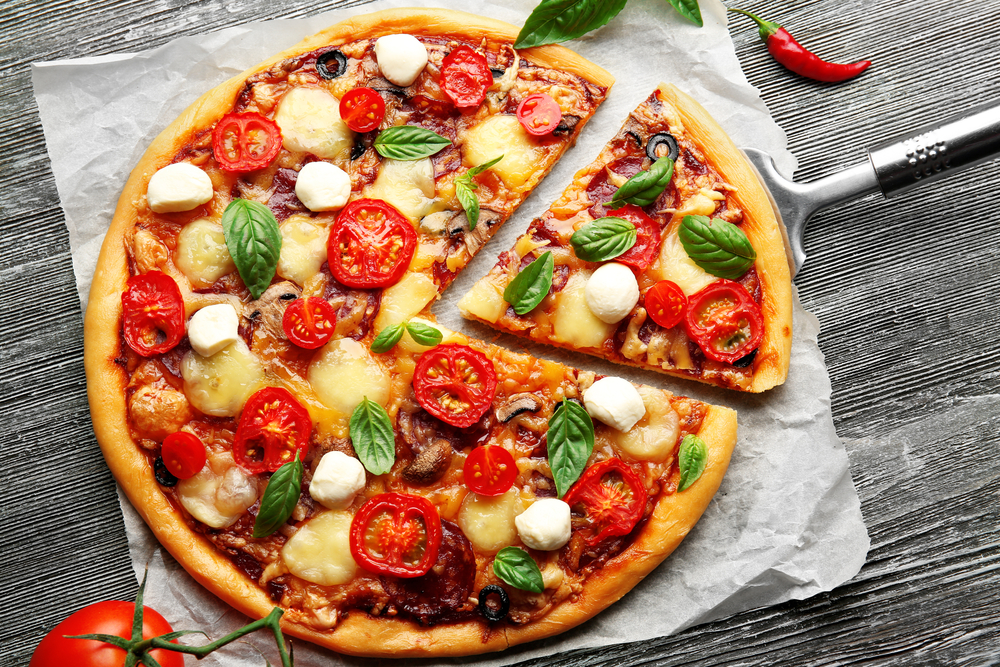
Why Pizza Topping Order Matters
The order in which you add your pizza toppings can have a significant impact on the overall quality of your pizza. If you add your toppings in the wrong order, you may end up with a soggy pizza with a limp crust.
On the other hand, if you add your toppings in the right order, you can achieve a crispy crust, well-baked toppings, and melted cheese.
How Topping Order Affects Flavor and Texture
Here are some ways in which topping order can affect the flavor and texture of your pizza:
- Moisture: If you add wet toppings like tomatoes or mushrooms before the cheese, they can release moisture and make the crust soggy. To avoid this, add your cheese first and then your toppings.
- Crispy crust: To achieve a crispy crust, you need to let the moisture evaporate during baking. To do this, add your toppings in a way that allows the cheese to melt and brown, and the crust to crisp up. Typically, you want to add your cheese first, followed by any meats, vegetables, or other toppings.
- Flavor: The order in which you add your toppings can affect the flavor of your pizza. For example, if you add herbs or spices before the cheese, they may burn during baking and become bitter. To avoid this, add your cheese first and then your herbs and spices.
Here is a recommended pizza topping order that can help you achieve a delicious pizza:
- Cheese: Start with a layer of cheese to help hold the other toppings in place and create a delicious base for your pizza.
- Meat: Add any meats like sausage, pepperoni, or ham next. These toppings tend to release fat during cooking, which can add flavor to your pizza.
- Vegetables: Add your vegetables next, starting with those that release the most moisture, like mushrooms or onions. Then add any other vegetables you like, such as peppers, olives, or tomatoes.
- Herbs and spices: Finally, add any herbs or spices you like, such as oregano, basil, or red pepper flakes.
By following this order, you can create a pizza with a crispy crust, well-baked toppings, and delicious flavor.
The Basic Pizza Topping Order
When it comes to pizza, the toppings are what make it truly delicious. However, the order in which you add your toppings can make a big difference in the final product.
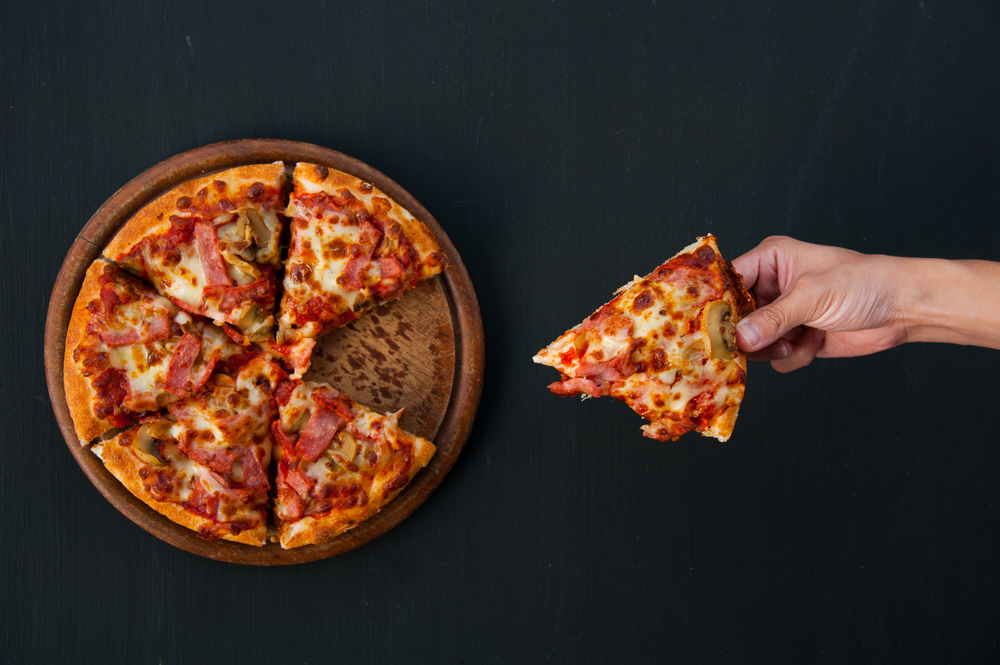
Here is the basic pizza topping order that we recommend:
- Sauce: Start with a layer of sauce on the crust. This will help to keep the crust from getting too dry and will provide a base for the other toppings.
- Cheese: Add your cheese on top of the sauce. This will help to hold the other toppings in place and will provide a delicious, melted layer on top of your pizza.
- Meat: If you are using any meat toppings, add them next. This will ensure that they are cooked properly and will infuse the cheese and sauce with their flavor.
- Vegetables: After the meat, add any vegetables you are using. These will cook quickly and should be added on top of the cheese to prevent them from getting too soggy.
- Herbs and Spices: Finally, add any herbs or spices you want to use. These will add extra flavor to your pizza and can be sprinkled on top of the other toppings.
By following this basic pizza topping order, you can ensure that your pizza is cooked evenly and that the toppings are distributed in a way that makes every bite delicious.
Of course, you can always switch up the order or add additional toppings to suit your tastes. However, this basic order is a great starting point for any pizza recipe.
The Best Order for Specific Toppings
When it comes to pizza toppings, the order in which you add them can make a big difference in the final taste and texture of your pizza.
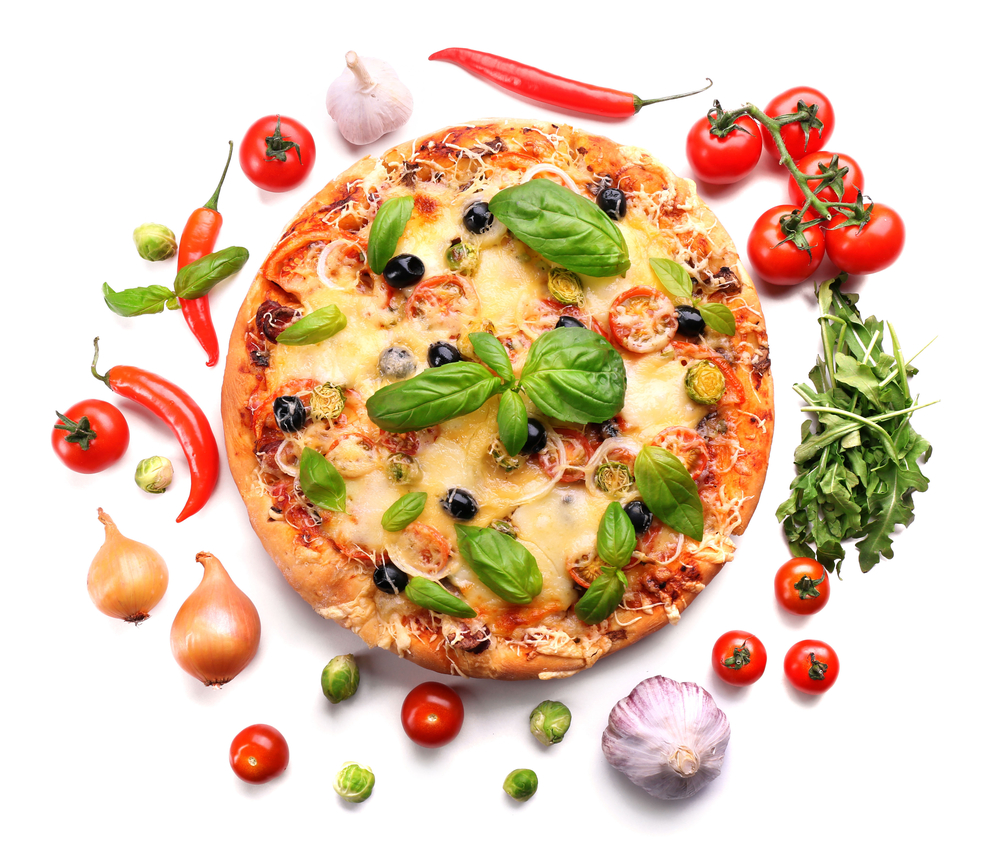
In this section, we’ll explore the best order for specific toppings to help you create a delicious pizza every time.
Meat Toppings
Meat toppings are a popular choice for pizza lovers, but they can also be tricky to get right. Here’s the best order for adding meat toppings to your pizza:
- Pre-cook any raw meat toppings, such as sausage or chicken, before adding them to your pizza. This will ensure that they are fully cooked and safe to eat.
- Add cured meats, such as pepperoni or prosciutto, next. These meats are already cooked and just need to be heated through.
- Add any bacon or ham toppings next. These meats can add a lot of flavor to your pizza, but they can also release a lot of oil, so it’s best to add them before any other toppings.
Vegetable Toppings
Vegetable toppings can add a lot of flavor and texture to your pizza, but they can also release a lot of moisture, which can make your pizza soggy.
Here’s the best order for adding vegetable toppings to your pizza:
- Add any onions or peppers first. These vegetables can take longer to cook and can benefit from being directly exposed to the heat of the oven.
- Add any mushrooms or black olives next. These vegetables release a lot of moisture when cooked, so it’s best to add them before any other toppings.
- Add any pineapple toppings last. Pineapple can add a sweet and tangy flavor to your pizza, but it can also release a lot of juice, which can make your pizza soggy.
Cheese Toppings
Cheese is a crucial component of any pizza, and the order in which you add it can make a big difference in the final texture and flavor of your pizza.
Here’s the best order for adding cheese toppings to your pizza:
- Add a light layer of shredded mozzarella cheese first. This cheese will melt quickly and help hold your other toppings in place.
- Add any other shredded cheese, such as cheddar or parmesan, next. These cheeses can add additional flavor and texture to your pizza.
- Add any crumbled or sliced cheese, such as feta or fresh mozzarella, last. These cheeses can add a lot of flavor to your pizza, but they can also release a lot of moisture when cooked, which can make your pizza soggy.
The order in which you add your pizza toppings can make a big difference in the final taste and texture of your pizza. By following these guidelines, you can create a delicious pizza every time.
The Importance of Layering
When it comes to making the perfect pizza, the order in which you layer your toppings is crucial. Not only does it affect the overall flavor and texture of the pizza, but it can also impact the cooking time and the appearance of the final product.
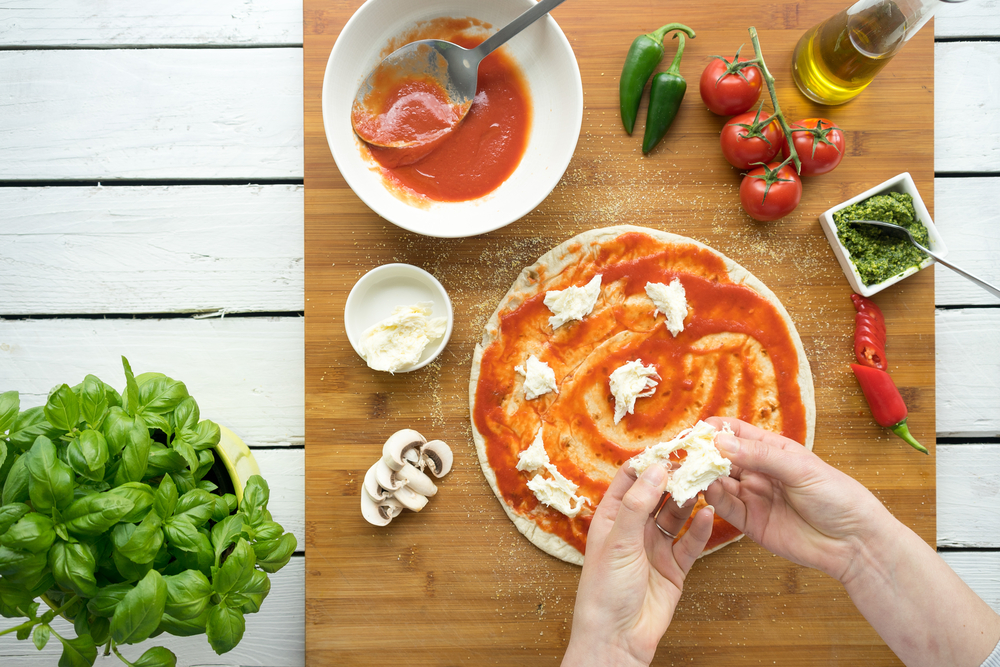
By layering pizza toppings in the right order, we can ensure that each ingredient is cooked to perfection and that the flavors are balanced. Here are a few factors to consider when layering your pizza toppings:
Surface Area
One of the most important factors to consider when layering pizza toppings is surface area. Toppings that have a lot of surface area, such as mushrooms or onions, should be placed on top of the cheese to help them cook evenly and prevent them from drying out.
On the other hand, toppings with less surface area, such as pepperoni or sausage, should be placed underneath the cheese to prevent them from burning and to allow the grease to seep into the crust, adding flavor and moisture.
Cooking Time
Another important factor to consider when layering pizza toppings is cooking time. Toppings that require a longer cooking time, such as raw vegetables or meats, should be placed on the bottom of the pizza to ensure that they are fully cooked by the time the pizza is ready.
Toppings that require less cooking time, such as herbs or thinly sliced vegetables, should be placed on top of the cheese to prevent them from overcooking and losing their flavor.
Balance of Flavors
Finally, it’s important to consider the balance of flavors when layering pizza toppings. By layering toppings in a specific order, we can ensure that each bite of pizza has a balanced flavor profile.
For example, if you’re making a pizza with tomato sauce, cheese, and pepperoni, you might want to place the pepperoni on top of the cheese to prevent it from burning and to allow the grease to seep into the crust. This will also help balance the salty flavor of the pepperoni with the sweetness of the tomato sauce.
By considering factors such as surface area, cooking time, and flavor balance, we can ensure that each ingredient is cooked to perfection and that the flavors are balanced for a delicious final product.
Tips for Topping a Pizza
When it comes to making a delicious pizza, the order in which you add your toppings is crucial. Here are some tips to help you create the perfect pizza:
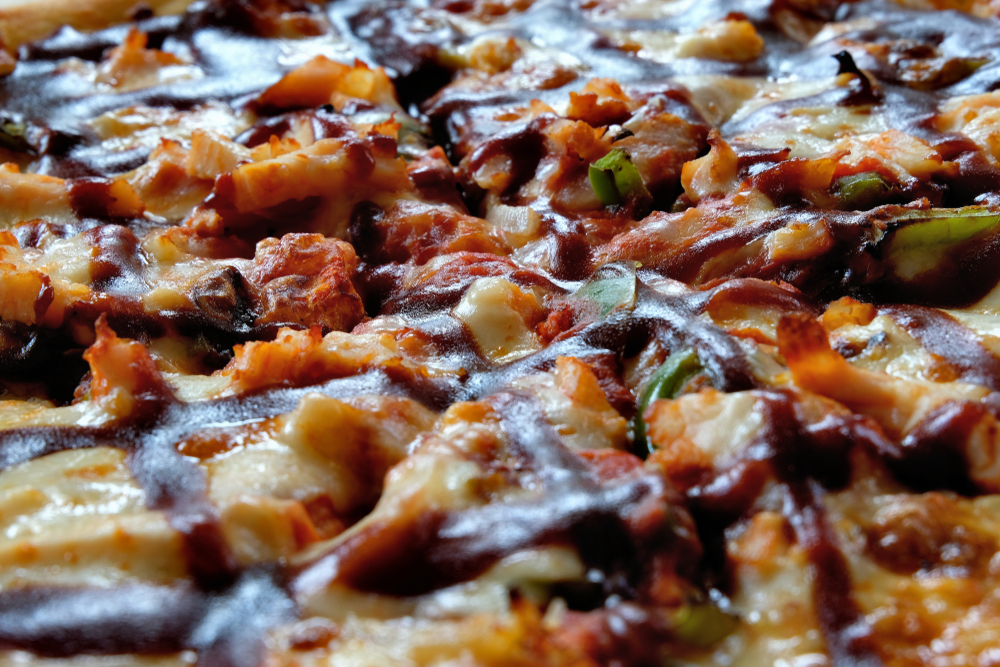
Preparing the Pizza Dough
Before you start adding your toppings, make sure your pizza dough is ready to go. Whether you use store-bought dough or make your own, be sure to let it rest for at least 30 minutes before rolling it out. This will help the dough relax and make it easier to shape.
Making the Sauce
A good pizza sauce can make or break your pizza. For an easy pizza sauce recipe, mix together canned tomatoes, garlic, olive oil, salt, and pepper. You can also add herbs like basil or oregano for extra flavor.
Choosing the Toppings
When it comes to pizza toppings, the possibilities are endless. However, it’s important to choose toppings that complement each other and won’t make your pizza soggy. Some popular toppings include pepperoni, mushrooms, onions, bell peppers, and olives.
Ordering the Toppings
The order in which you add your toppings is important. Start with a layer of sauce, followed by cheese, and then your toppings. This will help prevent your pizza from getting soggy and ensure that your toppings cook evenly.
Baking the Pizza
To get a crispy crust, it’s important to bake your pizza at a high temperature. Preheat your oven to 450°F and place a pizza stone or baking sheet in the oven to heat up.
Once the oven is hot, carefully transfer your pizza to the stone or sheet and bake for 10-12 minutes, or until the crust is golden brown and the cheese is melted.
By following these tips, we can create a delicious homemade pizza that will rival any pizza oven or brick oven pizza out there.
Presentation and Garnishes
When it comes to pizza, presentation is key. Not only should it taste great, but it should also look appealing. Here are a few tips on how to make your pizza look as good as it tastes:
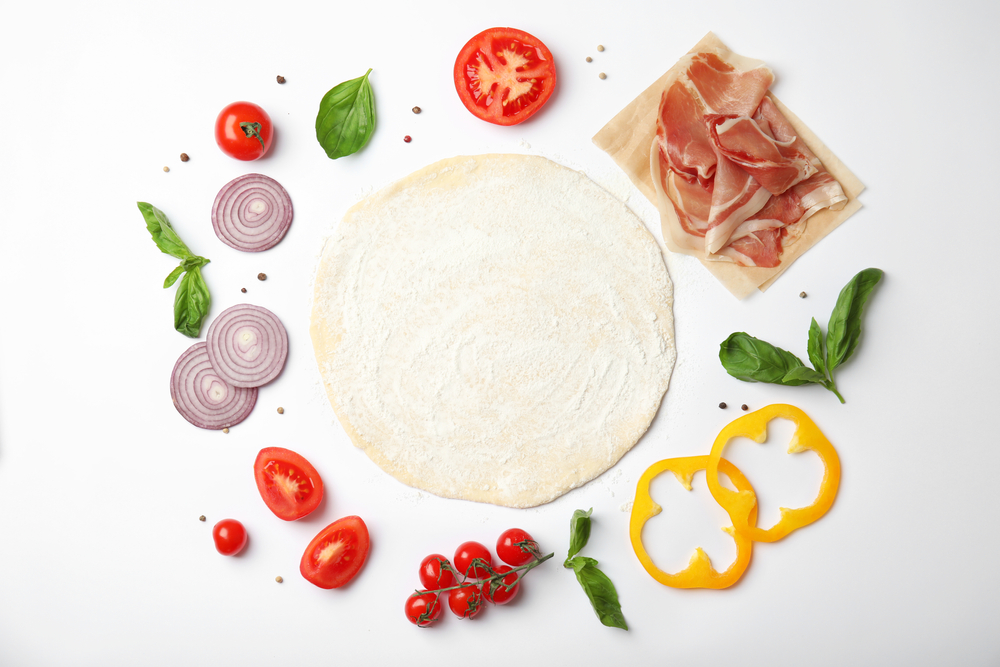
Garnishes
Garnishes are the finishing touches that can take your pizza from good to great. Here are some popular garnishes to consider:
- Fresh Herbs: Basil, oregano, and rocket (arugula) are all great options for adding a pop of color and flavor to your pizza.
- Red Pepper Flakes: For those who like a little heat, red pepper flakes are a great way to add some spice to your pizza.
- Parmesan Cheese: A sprinkle of parmesan cheese can add a salty, nutty flavor to your pizza.
- Balsamic Glaze: Drizzling balsamic glaze over your pizza can add a touch of sweetness and acidity.
Presentation
In addition to garnishes, the way you present your pizza can make a big difference. Here are some tips on how to present your pizza like a pro:
- Use a Pizza peel: A pizza peel is a long-handled tool that makes it easy to transfer your pizza from the oven to the table. It also adds a touch of authenticity to your pizza-making experience.
- Cut Your Pizza into Slices: Cutting your pizza into slices is not only practical, but it also makes your pizza look more appetizing.
- Add a Salad: A simple side salad can add some color and freshness to your pizza presentation. Try a Caesar salad or a mixed greens salad with a vinaigrette dressing.
- Sicilian Style: Sicilian-style pizza is known for its square shape and thick crust. This style of pizza can be a great way to mix up your presentation and impress your guests.
By following these tips, you can take your pizza presentation to the next level. Remember, presentation is just as important as taste when it comes to making the perfect pizza.
Conclusion
We have explored the various factors that go into deciding the order in which pizza toppings should be applied.
Whether you prefer the classic pizza toppings of tomato sauce, sliced cheese, and toppings on top, or you like to experiment with new combinations, there are a few general guidelines that can help you make the most of your pizza experience.
Firstly, it’s important to start with a good pizza base. Whether you prefer a thin and crispy crust or a thicker, doughier base, the quality of your crust will have a big impact on the overall taste and texture of your pizza.
In New York, for example, classic pizza is known for its thin, crispy crust that is cooked to perfection in a wood-fired oven.
Once you have your base, it’s time to add your sauce. Tomato sauce is the most common choice, but you can also experiment with other options like olive oil or pesto. Add a few sprigs of fresh basil or a sprinkle of oregano to give your pizza a burst of flavor.
Next, it’s time to add your toppings. From mushrooms and peppers to raw meat and sausage, the possibilities are endless.
In the United States, popular toppings include pepperoni, sausage, and mushrooms. In Illinois, for example, deep-dish pizza is a local favorite that is known for its thick crust and generous toppings.
When it comes to cheese, mozzarella is the most common choice, but you can also experiment with other varieties like cheddar or feta.
Be sure to slice your cheese thinly and place it on top of your toppings to ensure that it melts evenly.
Finally, it’s time to bake your pizza. Preheat your oven to around 425-450°F and bake your pizza for around 10-15 minutes, or until the crust is golden brown and the cheese is melted and bubbly.
The key to making a great pizza is to experiment with different combinations of toppings and find the ones that work best for you.
Whether you prefer a classic Margherita pizza or a loaded meat lover’s pizza, there are endless possibilities to explore.
So grab your favorite toppings and get ready to create your own perfect pizza masterpiece!







Add comment